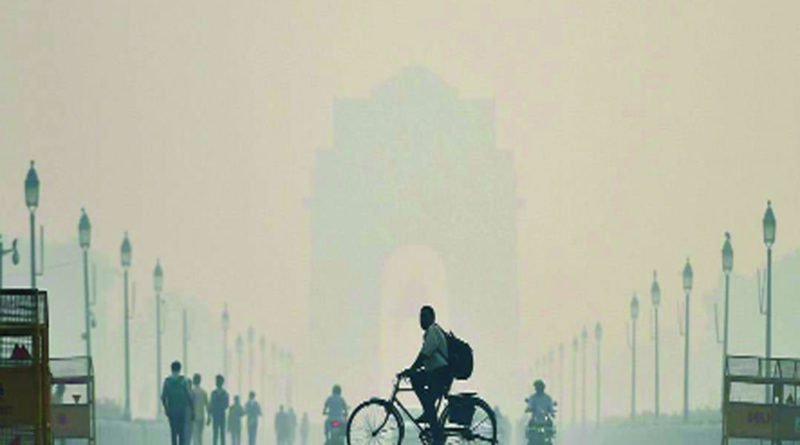It’s in the air
Research has confirmed our worst fears, polluted air not only exacerbates COVID symptoms, it traps the virus around us
The time for knee-jerk reactions is over and we better commit ourselves to cleaning up the air around us for good — through combined political will, implementable policies, lifestyle adjustments and sustainable practices — or else risk death. So latest scientific studies have confirmed what common sense has been telling us for some time, the higher the concentration of solid particles suspended in the air that lies heavy and low around us, the greater the chances of the COVID-19 virus getting trapped in them, making us more vulnerable to contracting it. And given that high air pollution levels damage the lungs, inducing or aggravating health conditions such as asthma, obstructive pulmonary disease, cardiovascular diseases and diabetes, the disease burden could turn COVID-19 fatal. Imagine the fallout on Delhiites, whose disease resistance has already been compromised battling winter haze every year. The National Centre for Disease Control (NCDC) has warned that Delhi could report around 15,000 cases daily this winter due to the prevalence of respiratory illnesses that can worsen the symptoms of the disease. A Harvard University study has proved that an increase of only one microgram per cubic metre in a particulate matter or PM 2.5 is associated with an eight per cent increase in the COVID death rate. So, the surge of PM 2.5 levels in Delhi could result in a spike in caseload besides exacerbating the severity of symptoms of those infected. Yet another study by the University of Cambridge in April established a link between patients living in a highly polluted area of England and the severity of COVID-19. Many parts of north India, especially Delhi, are already wrapped in a blanket of hazardous smoke. According to the 2019 World Air Quality Report, India has 21 of the 30 most polluted cities in the world, where air quality can be as much as 10 times over the safe limits recommended by WHO. Over the past few weeks, PM 2.5 levels in Delhi have averaged around 180-340 µg/m³ and on an extended basis, such saturation weakens the lungs and the body’s ability to fend off infections. Additionally, they can even act as a medium for the transmission of the virus as studies from Italy have recorded traces of SARS-CoV-2 RNA on pollutants. Stubble burning, festive fireworks and low wind speed conditions along with vehicular and industrial pollution have already worsened matters.
Hence we need to permanently solve the problem of pollution and that means going beyond tokenism. For starters, we need to stop stubble burning on an emergency basis across States, in mission mode to be precise. We must use the green cess collected so far to subsidise shredding equipment and maximise alternative uses of crop waste. We need a three-level combat strategy at the level of policy-making, economy and community. Both the Centre and State Governments have already rolled out various policies to address air pollution, one of the most recent ones being the National Clean Air Programme (NCAP). It calls on 122 cities across India to develop city-level clean-up plans to implement mitigation strategies for ambient PM concentrations. However, it has failed to enforce its targets and has remained ineffective. That’s because in the absence of a legal mandate, the NCAP is toothless. Besides, ensuring compliance means appropriate monitoring and inspection and it lacks trained personnel for these tasks. Also, its budgetary allocation is just not enough. Delhi has 38 real-time air quality monitoring stations while Uttar Pradesh and Maharashtra have 25 and 22 each, and Tamil Nadu has only five. This in turn causes data-related implementation hurdles, including poor data captured due to substandard monitoring stations and lack of appropriate methodology to leverage real-time data for reporting trends. In terms of policy, the Government needs to put a blanket ban on firecrackers. We must realise that life needs to be celebrated more than festivals at the moment. We also need to create a financial architecture where the private sector can help with cutting-edge innovations and unique technology solutions along with financing them. Having an investment fund with a dedicated green focus could catalyse the growth of such green industries along with addressing the problems of air pollution and climate change. Businesses should now disclose the air pollution footprint of their products and implement a cap on emissions. This can help the consumers make an eco-friendly choice. The number of premature deaths due to outdoor air pollution is predicted to increase from three million people in 2010 to six to nine million people globally in 2060. A study shows that approximately 2.2 million schoolchildren in Delhi are growing up with irreversible lung damage. There are various community-based solutions that can help the vulnerable sections. Researchers from Banaras Hindu University (BHU) have determined which trees are capable to put up with the assault of particulate matter gaseous pollutants (nitrous oxide, sulphur dioxide, ozone) in the city’s urban pockets. Such information can be used by urban planners in managing urban forests. Thus, the academic community can help find innovative solutions while communities in rural areas are made aware of the harmful effects of using traditional cooking stove. People need to follow small initiatives like “Red Light On, Gaadi Off” at signals, a message that has caught on a bit. In the end, this pandemic is just the immediate threat and irreversible climate change may bring about far more infectious diseases that we can barely fathom now. The brown haze has just made us sick. Unattended, it may soon choke us to death.
Source: The Pioneer




